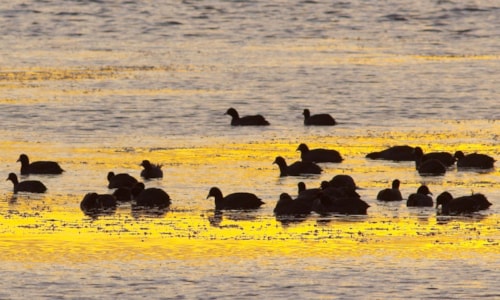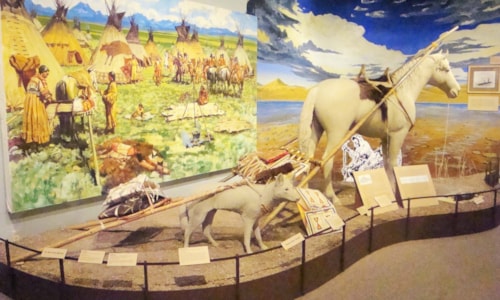Madison River

On September 19, 1870, after more than a month exploring what would become Yellowstone National Park, the Washburn Expedition camped on grassy meadows in the shadow of 7,560-foot National Park Mountain.
Here, where the Firehole and Gibbon rivers join to form the Madison River, the men declared that Congress should preserve this magical and wondrous place as a national park for the public and that any private ownership of the land would be inappropriate.
After returning to Montana Territory, in support of their findings, the participants of the Washburn party gave speeches, wrote newspaper and magazine articles, and contacted influential people they knew. Their campaign was a success and, the US Government was prompted to sponsor the 1871 Hayden Survey. Photographs and paintings of the unprecedented landscapes and formations led President Ulysses Grant on March 1, 1872, to create Yellowstone National Park… the world and the nation’s first national park.
Beginning from the same location where the idea to establish Yellowstone developed, the Madison River carries a special distinction.
Commencing its journey on the Madison Plateau and Continental Divide just south of Old Faithful near Shoshone Lake, the Firehole River heads north, gathering steam and speed as it maneuvers through three geyser basins.
As the Gibbon River leaves its birthplace in the Grebe Lake area northwest of the Grand Canyon of the Yellowstone, it takes a wild ride through two geyser basins, several rapids, and a dramatic 84-foot plunge off of Gibbon Falls before rendezvousing with the Firehole River to form the Madison River.

Newly created, the Madison begins its 150-mile run by passing herds of bison and elk as it meanders west to northwest before crossing out of the Park and resting briefly in Hebgen Lake and then again in Quake Lake, site of the Madison River Canyon Earthquake.
On August 17, 1959, at about 11:37 pm, the ground in the area of Hebgen Lake began to pitch and tremble; a major 7.5 earthquake was underway. Man-made structures moved, split apart, and some collapsed. For nearly12 hours, the usually placid water in Hebgen Lake began to slam back and forth like a tidal wave. The first few breakers, estimated to be 20 feet high, were large enough to flow over the dam. A few miles downstream in the Madison Canyon, shattered by the tremor, part of the mountainside began to fall away. With a horrid roaring and grinding noise, the avalanche crushed and buried campers, cars, and trailers. Folks tell of being knocked down by a violent air blast and then being engulfed by an enormous wave of water displaced from the river. Repeated aftershocks causing boulder and rockfalls continued to assault the survivors throughout the night. It wasn’t until daylight that the immensity of the event became apparent. A nearly one-mile-long section of the north-facing flank of a mountain, whose crest was about 1,300 feet above the river floor, had broken loose and moved across the canyon as a sheet. The momentum of the slide was such that it rode about 400 feet up the opposite canyon wall, effectively blocking the Madison River from the Madison Valley.
The waves that topped Hebgen Dam and the water released through the spillway began building up on the east side of the new rock and rubble dam, and Quake Lake was born. By August 31, it was five miles long, 150 feet deep, and rising nine feet daily. Only 22 days after the quake, just as the waters were about to breach the dam’s rim, a one-mile-long spillway hastily built by the US Corps of Engineers was completed, and a ruinous flood averted.
The deadly consequences of the August 17, 1959 earthquake stole the Madison River’s innocence and left a vivid reminder of the devastation nature’s power can render. Sadly, 28 people were killed, 19 of them entombed beneath the landslide.
Once the Madison River leaves the stillness of Quake Lake and bids farewell to the sight of the earthquake scarred mountainside, it rushes full of life out into the spacious Madison Valley where it holds court as one of Montana’s premier fly-fishing destinations. From the outlet of the lake to the Hwy 87 bridge (the road to Raynolds pass and Idaho’s Henry Lake), the river is described as bad floating water—huge drops, large boulders, and a wild ride.
Shallow and fast, the 48 miles from the bridge to Ennis are famous for drifting on-the-water fishing and just plain running the river; some have called it one continuous riffle.
Flanked by the Madison and Gravelly mountain ranges and flowing in a northerly direction, the Madison touches Ennis, the river’s “fly fishing capital.” A tidy little town with the old West look and named after one of the valley’s first settlers, William Ennis. He built a store in the vicinity of the present townsite in 1879, and then when the post office opened in 1881, he became the first post-master. For 86 years, a member of the Ennis family managed the local post office.
Five miles below town, the Madison slows and spreads out into Ennis Lake. Acting as an enormous solar heat collector, the lake’s warm water creates a treat for the folks who float below the dam.
Whitewater fans revel in the difficult ten-mile wilderness stretch of Bear Trap Canyon with its legendary Double Drop, White Horse, Kitchen Sink, and Greenwave rapids. This beautiful part of the river cuts through the western edge of the Lee Metcalf Wilderness.
A colorful armada of inner-tubers, rafters, and fishermen populates the more sedate 11 miles from the Warm Springs to the Greycliff river access sites on any summer day.
At this point, the Madison breaks away from the road. Now, forging the last leg of the journey to the Gallatin Valley, it passes through an isolated section featuring, on its east flank, 100-foot-high gray-colored bluffs. Several miles northeast of the town of Three Forks, the Madison and Jefferson rivers, each close to 100 feet wide, converge. The US Geologic Survey claims the Missouri starts at this point. However, history and common acceptance dictate that the Missouri doesn’t start until the two rivers meet the Gallatin River.
The Madison River begins and ends in legendary places—the first national park and the commencement of a mighty river. And, it has the honor of being named by the leaders of the Corps of Discovery… Captains Meriwether Lewis and William Clark.
There was no question in the two leaders’ minds that this was the headwaters of the Missouri. July 28, 1805, Lewis wrote, “Both Capt. C. and myself corrisponded in opinion, with rispect, to the impropriety of calling either of these streams the Missouri and accordingly agreed to name them … we called the S.W. Fork, that which we meant to ascend, Jefferson’s river in honor of Thomas Jefferson. the Middle fork we called Madison’s River in honor of James Madison, and the S. E. Fork we called Gallitin’s river in honor of Albert Gallitin.”











